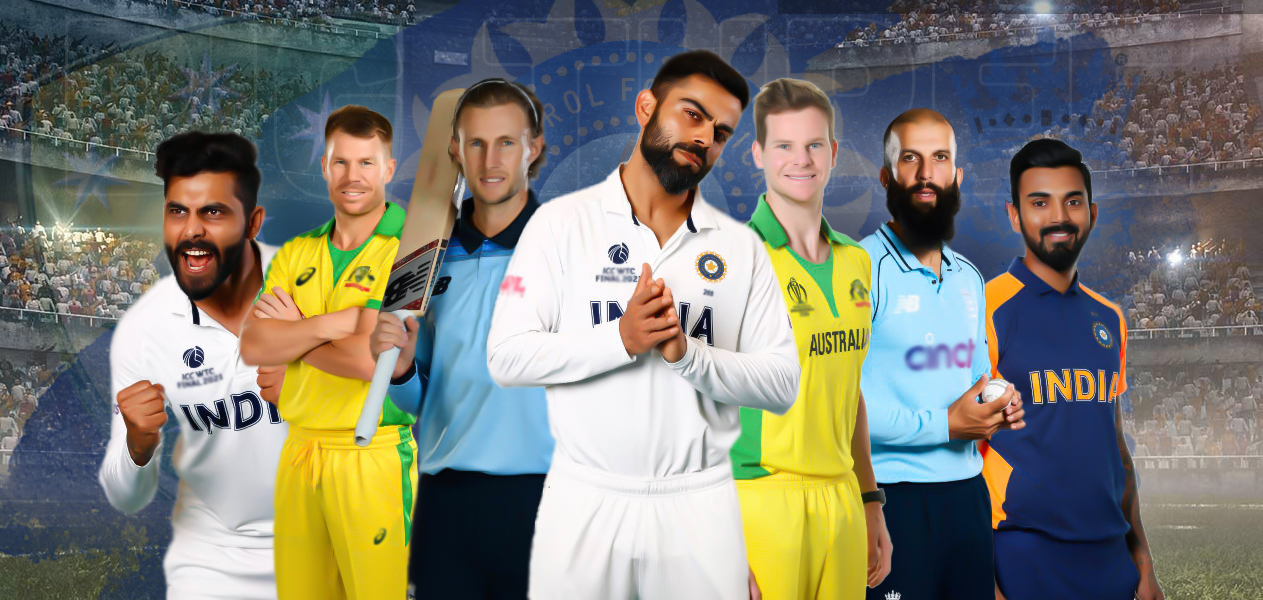When New Zealand won the WTC final in June, although it might have broken a billion Indian hearts, the win might just also have saved world cricket. The underdogs had punched above their weight to beat a system that is rigged to fail.
It is no secret that over the last decade or so, world cricket has been controlled by three major countries – India, England and Australia – with the governing bodies of these three countries having major impact over all decisions that have been taken over the last few years.
Let’s take a look at a few examples that show the Big Three’s dominance.
One of the major revenues for a nation comes from hosting and broadcasting rights. Let’s start with the hosting rights, since 2011, all the Men’s World Cups have been hosted by the Big Three (2011 – India, 2014 T20 WC – India, 2015 Australia, 2016 T20 – India, 2019 – England), the two Champions Trophy tournaments held since 2011, the 2013 and 2017 editions, have been held in England and the next ODI World Cup is also scheduled to be hosted by India, in 2023. Add to that the 2021 World Test Championship final, which was hosted in England.
Also Read – CRICKET: WHAT IS THE HUNDRED?
More is never enough
The international calendar is essentially based around these three teams. If we look at the number of Tests played by the ICC Test-playing nations over the last ten years (2010 – 2019), England have played 125, India 117 and Australia 116. Now if we compare this to the Tests played by the other nations, South Africa have played 98 Tests, Pakistan 92, New Zealand 92 and the West Indies 93. Bangladesh have played only 62 matches whilst Zimbabwe have managed to play 31 Test matches in the same period, a vast difference between the top teams and the lower ranked teams.
Test cricket, the pinnacle of the game, has seen a decline not only in viewership but also in the overall number of matches played. Between 2000-2009, there were 464 Tests that were played and that further dropped in the 2010-2019 cycle, where 434 Tests were played despite two new nations in Ireland and Afghanistan joining as a Test member. A team like West Indies who played 108 Tests between 2000-2009 played 25 fewer Tests between 2010-2019, while Zimbabwe have become almost a non-Test playing team.
17%, or about one in six of all the cricket matches in the same time period, have included India and Australia playing each other. This means 7.6 Tests every year feature at least two of those three teams. The recently concluded WTC also sheds some light on very matter. In the very first edition of the WTC, England played almost three times the number of Tests Bangladesh played.
It’s pretty simple – the more you play, the better you get, and that is why the Big Three dominate the game both on and off the field. This puts some of the best players in the world against each other, which also means the best play the best and get better within themselves while the smaller nations rarely get a chance to play the highest form of the game against the best players. Even when an India team play against Zimbabwe, it’s a relatively “weaker” Indian side, with the best players rested.
How does the game grow all over the world in such circumstances? The ICC has 105 members, but only ten get the opportunity to play Test cricket.
Playing more, winning more and hosting more tournaments help these countries earn more, and their boards then invest the money to develop the game in their own countries. More investment in training equipment, sports science, and analysis means these nations can develop their game much quicker and to a much higher level than the so-called ‘smaller’ nations.
Also Read – BCCI v ICC – WHO CONTROLS WORLD CRICKET?
The smaller nations, by playing less and winning seldom, earn less, and that stops them from investing more in the development of the game and build right from the grassroots level. They might even have more talented players, but they don’t get the same facilities as the bigger nations do. This is clearly visible with the depth of these nations’ cricket system.
India currently have two teams playing almost simultaneously, while England fielded a completely new squad for the Pakistan series which saw them rout the visitors with a squad full of debutants. Can you think of a scenario where the West Indies send a B team to India for a series? Or when was the last time Bangladesh played a 5-Test series? Probably not.
The system is built in a three-tier way – the first tier having the Big Three, the second one including Pakistan, Sri Lanka, New Zealand, South Africa and the West Indies, and the third tier comprising of Bangladesh, Zimbabwe, Afghanistan and Ireland.
And the majority of the problem lies here: while the Big Three are playing four and five-match Test series with each other, the remaining are having to make do with just two to three Test matches.
Post COVID, this has become more prominent. Whenever the Big Three travel for away tours, especially outside themselves, it brings is a lot of revenue for the host nations. Since COVID, the only team that have travelled to India for a series are England, while England and Australia are the only nations India have travelled to. Australia have made only one white ball tour, which was in England in 2020, and have only recently travelled to the West Indies. England since then have made only one journey, and that was to India amidst the raging pandemic in the country, with crowds being allowed for the games which one can only presume was for bolstering the revenue.
Earlier in 2021, when a cluster of cases started rising in Australia, the CA and the BCCI still went ahead with their Test series, where a few months back the CA had ‘postponed’ a series versus South Africa. While England and India play a five-Test series and later in the year, Australia face England for the Ashes, teams like South Africa currently play Ireland and are scheduled to host the Netherlands, while Zimbabwe are to host Bangladesh.
Money, money, money
India began their economic reforms in 1991, but it was in 2003 that the Indian economy grew substantially, reaching almost 10% in 2007 as per the International Monetary Fund’s data. This also was accompanied by a boom in the television market and the birth of 800 private channels in different languages. After a lengthy fight with the Indian government, the BCCI won the broadcast rights, with these new channels willing to bid millions of dollars to get the country’s biggest stars on their airwaves.
Cash has always been the king. The BCCI accounts for just fewer than 70% of the ICC’s total revenue. Hence, the revenue share received is also based on the contributions made by the members – the more you give, the more you get.
The 2016-2023 broadcasting cycle, which included two ODI Men’s World Cups, had 93 of the associate members receive £175 million from the ICC, while India alone got £320 million. If we look back at the hosting rights of the major tournaments over the years, along with hosting these tournaments, these rights also help strike lucrative broadcasting deals. Money has always played a huge role in this.
The Indian Premier League is another prime example. How often have we seen players from the West Indies, South Africa, and Bangladesh opt to play in the IPL rather than represent their own countries at the same time? The money the IPL provides the players with isn’t even close to what their boards can offer, and for players who also need to survive through this game, they eventually choose the T20 leagues rather than international duty.
Also Read – THE INDIAN CRICKET SYSTEM – WHAT MAKES THE INDIAN TEAM CHURN OUT TALENT YEAR AFTER YEAR?
The financial standing of many of these boards was already not too well to begin with, and post the pandemic it has just gotten worse, with issues ranging from non-payment of match fees to unavailability of sponsors running rampant. Post COVID, the gulf between the Big Three and the other nations will only continue to grow, if the smaller nations continue to be neglected.
India, England and Australia will probably feel they deserve the power they have given how much they give to the ICC and that majority of the viewership of the games comes because of them. But the gap between the top three and other nations just continues to grow, and their power over cricket’s governing body is slowly becoming unquestionable.
Case in point, the T20 Men’s World Cup is scheduled for October this year, and with the current calendar packed the BCCI really did not have any place to bulldoze the remaining IPL matches, but alas, they did find a way. As the current schedule stands, the IPL finishes just a week before the T20 World Cup commences.
Was the IPL really necessary, given the tight schedule and the importance of a World Cup? What about managing player workloads? All these questions point to but one thing and that is the amount BCCI makes from the IPL, so much so that it even asked to ICC to shift the World Cup so that the IPL could be been held properly.
The current FTP (Future Tours Program) is another schedule that is extremely challenging, with eight ICC tournaments scheduled in eight years, along with an extended IPL and majority of the calendar dominated by India, Australia and England.
Cricket today is mostly designed around helping these three nations. Hence, when New Zealand won the WTC, not only did they overcome what was a stronger side on paper, they also beat the system that is designed against them. India’s domestic system has almost 40 Ranji (38, to be precise) teams, while New Zealand’s domestic circuit has six first class teams. You get the picture. The talent, the player pool, the money, and the infrastructure – everything pointed towards an Indian victory, and yet the Kiwis finished first.
The World Test Championship also is a positive sign for the game, as it gives the ICC a chance to put down its foot, especially when it comes to Test cricket. The point system for the first WTC edition also helped the smaller nations a bit, although the entire system was criticised heavily and has been changed heading into the second edition of the WTC.
For the game to grow worldwide, cricket needs to move out from the Big Three. Imagine the revenue a market like China could bring if they were playing cricket at the highest level. Countries like China and the USA have been plagued by the lack of financial backing and hence suffer as a consequence, but if cricket does become an Olympic sport, things might change, with the Chinese government already having stated that it will invest heavily in cricket if it were to be an Olympic sport.
Up until now, Test cricket has always been just a bunch of bilateral agreements held between two nations, but with the WTC format, the ICC probably wants to put its foot down. But this is just a start, and a lot needs to be done to keep cricket alive. With so much international cricket crammed into the international calendar year-round, the game is beginning to lose its relevance.
It just might be case where the boy isn’t crying wolf anymore, rather the wolf has actually arrived at the door. The greed of a few has struck a vital blow and unless put in check, the Big Three could ruin the gentleman’s game for the rest of the world.


















